Breaking News


Popular News

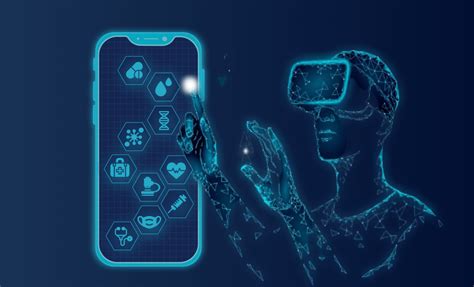
Discover how augmented reality is transforming healthcare – from improving surgical procedures and medical training to enhancing patient education and remote patient monitoring. Explore AR’s impact on mental health treatment.The healthcare industry has always been at the forefront of embracing innovative technologies to enhance patient care, streamline medical procedures, and improve overall outcomes. In recent years, augmented reality (AR) has emerged as a game-changing tool in transforming the way medical professionals approach training, surgical procedures, patient education, remote monitoring, and mental health treatment. In this blog post, we will explore the various ways in which AR is revolutionizing the healthcare industry. From enhancing medical training and improving surgical procedures to providing advanced patient education and enabling remote patient monitoring, AR is paving the way for a new era of healthcare. Additionally, we will delve into the impact of AR on mental health treatment and how this technology is reshaping the approach to addressing mental health disorders. Join us as we uncover the profound ways in which AR is reshaping the future of healthcare.
Contents
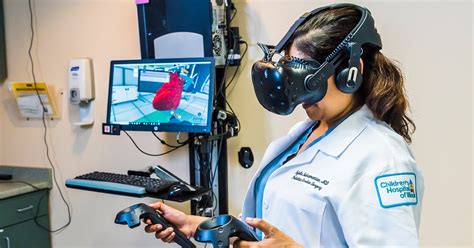
Augmented Reality (AR) is transforming the way medical trainees learn and practice. By incorporating AR technology into medical training, students are able to visualize complex anatomical structures in 3D, making it easier to understand and retain information. This immersive learning experience allows trainees to interact with virtual patients and simulated medical procedures, providing realistic hands-on training without the risk of harming live patients.
Furthermore, AR can enhance medical training by providing interactive tutorials and real-time feedback on student performance. By using AR applications, trainees can practice surgical procedures in a virtual environment, receiving guidance and assessments as they go. This innovative approach to medical education enables students to develop their skills in a safe and controlled setting, ensuring that they are well-prepared for real-life clinical practice.
Additionally, AR technology can be used to create collaborative learning experiences, allowing trainees to work together in a virtual environment. This not only fosters teamwork and communication skills but also enables students to gain insights from peers and mentors, enhancing their overall learning experience.
In conclusion, AR is revolutionizing medical training by providing immersive, interactive, and collaborative learning experiences. With its ability to visualize and simulate complex medical scenarios, AR has the potential to significantly improve the skills and competencies of future healthcare professionals.
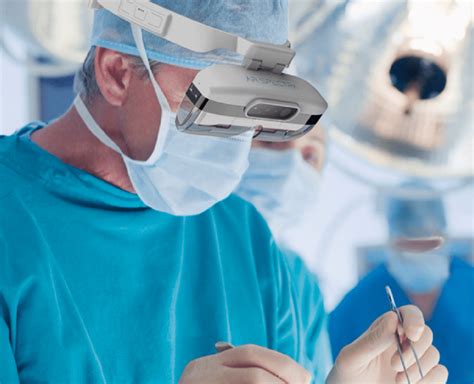
Augmented Reality (AR) has become a game-changer in the healthcare industry, particularly in improving surgical procedures. The use of AR technology allows surgeons to have access to real-time, three-dimensional visualizations of the patient’s anatomy during surgery. This enables them to have a better understanding of the patient’s specific anatomy, leading to more precise and accurate procedures.
Additionally, AR can assist in surgical training by providing trainee surgeons with a simulated environment to practice complex surgical procedures. This hands-on experience in a virtual setting allows them to gain valuable skills and confidence before performing surgeries on actual patients. This ultimately leads to better surgical outcomes and reduced risks for patients.
Furthermore, AR can be utilized for preoperative planning, enabling surgeons to map out the surgical procedure and simulate different scenarios before the actual surgery takes place. This enhances the overall efficiency and safety of surgical procedures, as surgeons can anticipate potential challenges and plan accordingly.
| Benefits of AR in Surgical Procedures | Examples |
|---|---|
| Improved surgical precision and accuracy | Using AR to visualize the exact location of tumors in real time during cancer surgeries |
| Enhanced surgical training and education | Simulating complex surgical procedures for trainee surgeons |
| Preoperative planning and simulation | Mapping out the surgical procedure and anticipating potential challenges |
In conclusion, the integration of AR in surgical procedures has revolutionized the way surgeries are performed, leading to improved precision, enhanced training, and better overall outcomes for patients. As technology continues to advance, AR will undoubtedly play a pivotal role in shaping the future of surgical procedures in the healthcare industry.
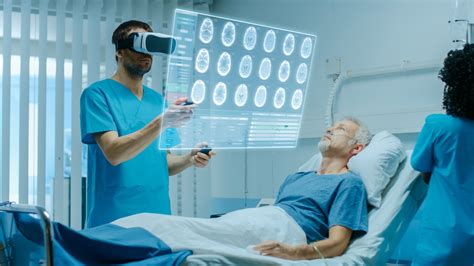
Augmented Reality (AR) has opened up new possibilities for patient education in the healthcare industry. By leveraging AR technology, medical professionals can provide patients with interactive and engaging educational experiences that allow them to better understand their medical conditions and treatment plans.
One way in which AR is enhancing patient education is through the use of 3D models and simulations. With AR-enabled devices, patients can visualize complex anatomical structures and medical procedures in a way that is both immersive and easy to comprehend. This can help patients make more informed decisions about their healthcare and feel more empowered in their treatment journey.
AR also allows for personalized patient education experiences. Medical professionals can create AR content tailored to each individual patient’s needs, incorporating specific medical imaging data and treatment information. This customization can lead to more effective patient education and improved treatment outcomes.
Furthermore, the use of AR in patient education can enhance collaboration between patients and healthcare providers. Patients can use AR technology to ask questions, express concerns, and actively participate in discussions about their medical care. This interactive approach to patient education fosters a sense of shared decision-making and can lead to better patient satisfaction and treatment adherence.
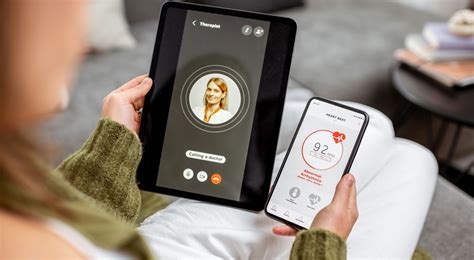
Augmented Reality (AR) is making significant strides in the healthcare industry, and one area where it is proving to be particularly beneficial is in remote patient monitoring. The use of AR technology allows healthcare providers to monitor patients’ vital signs and other health metrics in real time without the need for frequent in-person visits. This has the potential to greatly improve the quality of care for patients with chronic conditions, as well as those who live in remote or underserved areas.
One of the key ways in which AR is being utilized for remote patient monitoring is through the development of wearable devices that are equipped with AR capabilities. These devices can track and display a patient’s vital signs, such as heart rate, blood pressure, and oxygen levels, allowing healthcare providers to remotely monitor their patients’ health status. This real-time data can help in the early detection of potential health issues and allow for timely intervention, ultimately improving patient outcomes and reducing the need for emergency interventions.
In addition to wearable AR devices, healthcare providers are also exploring the use of AR-enabled applications for smartphones and tablets to facilitate remote patient monitoring. These applications can provide patients with personalized health information and guidance, as well as interactive tools for monitoring their own health and wellness. Patients can use these applications to input and track their vital signs, as well as to receive alerts and reminders for medication, appointments, and other important healthcare-related tasks.
Furthermore, AR technology is also being integrated into telemedicine platforms, allowing for virtual consultations and remote diagnostic assessments. This not only provides patients with greater convenience and accessibility to healthcare services but also allows healthcare providers to deliver more personalized and proactive care based on real-time health data. The potential for AR applications in remote patient monitoring is vast, and as technology continues to advance, it is expected to play an increasingly significant role in revolutionizing the way healthcare is delivered and received.

Augmented Reality (AR) is proving to be a game-changer in the field of mental health treatment, offering innovative solutions for both patients and therapists. By using AR technology, mental health professionals can create immersive environments to simulate real-world situations that trigger anxiety, phobias, or PTSD in patients. This allows therapists to guide individuals through exposure therapy in a controlled and safe setting, helping them confront and overcome their fears.
Furthermore, AR can also be utilized in mindfulness and relaxation techniques, providing patients with calming visual and auditory stimuli to reduce stress and anxiety. This immersive experience can transport individuals to peaceful and serene environments, offering a welcome escape from the daily pressures and demands of life.
Another significant impact of AR in mental health treatment is in patient education and self-awareness. Therapists can use AR to visually explain complex psychological concepts, helping patients better understand their conditions and treatment options. Additionally, patients can track their progress and engage in interactive activities through AR applications, enhancing their sense of control and empowerment in their mental health journey.
| Benefits of AR in Mental Health Treatment |
|---|
| Enhanced exposure therapy for phobias and PTSD |
| Effective mindfulness and relaxation tools |
| Improved patient understanding and self-awareness |

What is augmented reality (AR)?
Augmented reality is the technology that superimposes computer-generated images or information onto a user’s view of the real world, providing a composite view.
How is augmented reality being used in the healthcare industry?
AR is being used in healthcare for medical training, patient education, surgical navigation, rehabilitation, and mental health therapy.
What are the benefits of using augmented reality in healthcare?
The benefits include improved surgical accuracy, reduced medical errors, better patient understanding, enhanced medical training, and increased efficiency in healthcare delivery.
Are there any challenges to implementing augmented reality in healthcare?
Challenges include cost of implementation, technological limitations, privacy concerns, and the need for proper training for healthcare professionals.
Can augmented reality improve patient outcomes?
Yes, AR can improve patient outcomes by providing better surgical precision, personalized treatment plans, and more effective rehabilitation programs.
What are some notable examples of augmented reality applications in healthcare?
Examples include AccuVein’s vein visualization system, Proximie’s surgical assistance platform, and AiSolve’s VR therapy for children with autism.
What does the future of augmented reality in healthcare look like?
The future holds potential for further advancements in AR technology, expanded use in medical education, remote patient monitoring, and personalized medicine.